- Home
- Thomas Keneally
Australians, Volume 2 Page 11
Australians, Volume 2 Read online
Page 11
Led by Pilot, the party crossed the McArthur River. Here they released the little boy and left him in negotiations with the tribe in whose country he had been dumped, the Wilangarra, who would later become extinct. At Limmen Bight, in the western corner of the Gulf of Carpentaria, the overlanders ran into 130 blacks dressed as if for a ceremonial occasion ‘with feathers and down of all kinds of birds tufted on their breasts and all over their bodies’, and believed as many settlers did that feathers bespoke hostile intentions. This was a fatal misconception, for the arduously collected feathers were always used for ceremonial purposes. Uhr arranged his companions in pairs, telling each of them to shoot in sequence at his command, so that there were always two rifles ready to fire at any time. The overlanders fired their weapons, which the people of the area were unlikely ever to have seen before. Uhr and the others were surprised that the natives went on throwing spears and boomerangs for a full half-hour despite their brethren ‘who writhed or lay forever motionless among them’. Eventually the Aborigines retreated a short distance and turned the points of their spears downwards, surrendering. To deal with the wounds, some of them tore bark from ti-trees for bandages, while others used fragments of broken spear, retrieved from the fire, for splints for shattered limbs.
One of the party, Cox, now rode ahead, and would reach the Overland Telegraph depot near the junction of Hodgson and Roper rivers, near Miniyeri, on 17 August, five days before the telegraph wires from Palmerston (later to become Darwin) to Port Augusta were finally joined up to transform communication between Australia and the world. Uhr’s cattle—not many of the horses survived—were sold along the way at the new goldfield near Pine Creek telegraph station, a field to which some prospectors had walked from Charters Towers. After all that damper, the miners were hungry for beef. With what was left of the mob, the first overlanders from Queensland turned north to Palmerston, which was in similar need.
The first permanent pastoralist settlement in Central Australia was not founded until 1876, when Owen Springs and Undoolya south-west of Palmerston were taken up by Irish-born Ned Bagot, who had copper-mining and pastoral interests near Kapunda in South Australia, and who was the contractor who had built the southern section of the Overland Telegraph from Port Augusta to just north of Lake Eyre. In 1877 Glen Helen, named for the niece of the pastoralist Alexander Grant, west of Alice Springs, and Henbury, south of the telegraph station at the Springs, were established. By 1884 there were thirty-two stations in the Territory, although most of them were in the north.
The sturdy Tiwi people of Melville and Bathurst islands resisted every attempt to turn their country into cattle stations. Any whites landing on the islands were prevented from going inland by tall, well-built angry natives. In 1895 Joe and Henry Cooper established a buffalo-hunting camp on Melville Island but Harry was killed by the Tiwi two years later, and Joe was forced to escape to the mainland, taking with him two kidnapped Tiwi women. Five years later he went back to the islands with a group of the warlike Iwaidja people from the Cobourg Peninsula east of Palmerston and set up a permanent camp. He remained the only European resident until the remarkable Father Francis Xavier Gsell set up a mission on nearby Bathurst Island in 1911.
John MacCartney, another of those thrustful Irish-born Protestants, who would own twenty-five stations in Queensland, set up Florida Station in 1892 on the Goyder River in Eastern Arnhem Land under the management of Wentworth D’Arcy Uhr. Not only did the tropical climate prove testing for livestock but Uhr, a tough overlander who strong-armed the local tribes, was forced out by Aboriginal attacks within a year. He wisely took up a hotel at Yam Creek and made a living out of, amongst others, thirsty gold-seekers. Indeed Arnhem Land would prove so unsuitable to the purposes of settlers that it was ultimately returned, freehold, to Aboriginal ownership.
KANAKA DAWN
For sixty years the native races of Polynesia and Melanesia were kidnapped from their homes and then enslaved, murdered, or simply left to their own devices on the edge of the towns and settlements of Australia. There were two periods of Kanaka ‘immigration’, of plantation labour that cost about sixpence per head per day. The first Kanakas were brought to Australia from 1847 onwards by the New South Wales pastoralist and trader Benjamin Boyd—not without peril, since his first recruiting vessel, the British Sovereign, was wrecked and the crew killed by native Melanesians and devoured. Boyd offered the recruited islanders supposed contracts, signed indecipherably by them. Their pay was to be 26 shillings a year plus food and clothing. Boyd kept three of them in Sydney as a walking advertisement which might attract orders from other grandees.
But their work as shepherds in the bush was not successful. They became targets for Aborigines, and if they wandered onto other stations they were driven away and persecuted by white agricultural labourers, who did not want their wages undermined. Many of Boyd’s Kanakas absconded anyhow; some even reached Melbourne, others Sydney, where they squatted on the pavement outside Boyd’s metropolitan offices and were a negative presence. Ultimately he had to return them home at his own expense. When they got back to the New Hebrides, the Kanakas discovered that during their absence their wives had been put to death according to custom because they had been presumed dead.
Financially overstretched, Boyd’s companies ultimately failed in 1849, after something like an insurance scandal involving damage to his ship the Seahorse and the failure of Boyd’s Royal Bank. On an expedition to Guadalcanal, he went ashore alone, at his own insistence, and vanished. No trace of him was ever found.
Kanakas (the word means ‘human being’ in Polynesian language) became fashionable again in the 1860s, when northern Queensland was subject to energetic settlement. Entrepreneurs began to look again to the New Hebrides as a possible source of labour. A lugger, Don Juan, arrived in Brisbane in August 1863 with a cargo of sixty-seven Kanakas ordered by Robert Towns, a robust Geordie who had married the half-sister of William Charles Wentworth and who had interests in banking, land and trade. He was exactly the sort of man who was now expanding his interests into both the Darling Downs and those northern regions of Queensland already named to honour the martyred explorer Edmund Kennedy.
In the small city of Brisbane, there was much press and public condemnation of Don Juan and Towns. In North America, Gettysburg had been fought in the name of the liberation of black races, and there were clergy and professionals in Brisbane who knew that, and were appalled that Towns was making an opening bid on a new form of slavery. An uneasy Queensland Legislative Assembly ordered Towns to submit to them the written instructions dated 29 July 1863 he had given his ‘blackbirding’ captains, Grueber and Ross Lewin.
These letters of course emphasised the care the captains and supercargoes (managers of the shipped labourers) were to take to allow the native to make an informed choice, and on general welfare of those shipped. But Ross Lewin was a sadist who had been cashiered from the Royal Navy after the first China war, had worked as a ‘slave driver’ in the sandalwood trade for Towns, and was troubled by the concept of kindness for South Pacific Islanders. The reality was that only a few of those who sickened on board were returned home, as promised, within the stated period, and the healthy were kept in Queensland for three years or longer. Towns had asked Grueber to make friends of any missionaries he met and to use them to help recruitment. Not quite disarmingly, Towns’ circular to be issued to the missionaries read, ‘I, with my cotton emigration . . . will do more towards civilising the natives in one year than you can possibly in ten.’
Towns’ ships the Uncle Tom and the Black Dog could carry more than 100 Kanakas and the Spec sixty-three. When the Kanakas arrived, Towns sold their labour to other planters but maintained 300 himself on his own cotton plantation on the Darling Downs. Towns ran a nineteenth-century version of a Potemkin village, Townsvale, 40 miles (60 kilometres) from Brisbane, and used it as a model farm for exhibition to the governor, Sir George Bowen, and other influen
tial colonials. After a visit in which Bowen saw well-clothed and well-fed Kanakas attending to duties that did not demand severe labour, Sir George congratulated Towns on a ‘splendid example of colonial enterprise’. But not all was splendid.
Ross Lewin was charged at Brisbane Police Court in 1867 with the rape of a girl whom he had dragged aboard his boat at Tanna in the New Hebrides, but there were no white witnesses and the magistrate refused to commit Lewin for trial. When Towns dismissed Lewin in any case, Lewin set up in business for himself and said he would be happy to receive orders for the importation of South Sea natives at £7 a head.
Meanwhile, sugar plantations were proliferating in north Queensland and sought Kanaka labour as well. Captain James Louis Hope, like Towns a member of the Legislative Council of the colony, had been experimenting with the growing of sugar on his property at Cleveland, south of Brisbane, and built a sugar mill in 1864, buying up the labour of fifty-four Kanakas from Towns’ schooner Uncle Tom. It was Hope who showed how efficiently Kanakas could be made to work on sugar plantations. Shortly after, Hope entered directly into the Kanaka trade himself. He took some of his expired three-year men to Brisbane, where they spent their entire wages on such goods as Jew’s harps, grindstones, beads, gunpowder and silk umbrellas to take home. He then purchased a 130-ton schooner and took the men to Tanna. There they showed the goods they had brought back and explained that these could be earned by ‘39 moons’ service in Queensland.
Some masters were conscientious in their treatment of islanders, others behaved more questionably. But the evil was that a plantation aristocracy was emerging. Sometimes wooden buildings were provided for the incoming labourers, sometimes the Kanakas were allowed to build their own conical grass or cane huts on the edge of the plantation. In all cases, sanitation and water supply were poor and disease common. Anthony Trollope, who visited Queensland in 1871, wrote that the Kanakas were ‘badly fed, and worse cared for. They received nominally ten shillings a month. I say, nominally, because instead of actually getting it, they get a small allowance of tobacco . . . and a supply of clothing which they would rather be without.’ He observed that their diet consisted chiefly of pumpkins, damaged corn and corncobs, ‘and when a bullock was killed they got the head, entrails and other reject parts’.
Nineteen natives employed by George Raff MLA absconded from his plantation early in 1868, complaining they had not been given sufficient food during their twelve-month service. They also alleged ill treatment by George Raff’s son, Robert. The party, including a woman, made their way to the Brisbane Immigration Depot and asked to be returned home. Instead, they were brought before the Brisbane Police Court. No interpreter was available. The magistrates ordered the men to return to the plantation. They refused to go, and so were again brought before the magistrates and had their agreements cancelled with the loss of twelve months’ wages.
Later in the same year twenty-three Kanakas employed by the Maryborough Sugar Company went on strike, claiming they had been promised a passage home within twelve months. The company relied on the alleged existence of three-year contracts. The men, who had been subsisting on the edge of town by eating grass, were arrested and sentenced by Maryborough justices to seven days’ imprisonment.
In at least one case Kanakas supplemented their diet with cannibalism. Charles Eden, a planter—of whose book, My Wife and I in Queensland, an English critic declared it was ‘enough to warn honest men away from Queensland for some time to come’, and who would be accused of libelling Queensland society—employed twenty natives from Tanna and Lava. The Tanna men ate several Aborigines. They also adopted a young boy of the Lava tribe, and one day Eden and his wife were invited to attend a ceremonial feast at which the boy was to be cooked and served up. The Edens adopted the boy instead.
The next legislative councillor to apply himself to the Kanaka trade was Captain Claudius Whish, formerly an officer in the British army serving in Persia, who planted sugarcane on the Caboolture River north of Brisbane in the mid-1860s. While still a member of the Legislative Council, Whish formed the Sugar Planters’ Association, which possessed powerful magic in its relations with government. A premier of Queensland, Sir Robert Ramsay Mackenzie—son of a baronet, conservative politician and friend of squatters, as well as an auctioneer and stock and station agent and commission broker in Brisbane—joined a ring of cabinet ministers and members of the Legislative Assembly and Council who chartered the 240-ton King Oscar. Mackenzie was exactly the sort of man for whom Queensland was a good place to make money and exercise power but not to settle for good. He had every intention of going back to Scotland rich. The consortium advertised:
South Sea islanders: The King Oscar has arrived, and will be again despatched to the islands without delay. Parties wishing to engage South Sea islanders for employment on stations, plantations, & C, are requested to apply immediately to the agents, FENWICK AND CO.
The group employed Ross Lewin as its recruiting agent. Lewin sailed to the New Hebrides on the King Oscar, shot some Islanders who resisted recruitment, burned villages, collected a cargo and sailed back to Queensland, where the Kanakas’ services were sold for £9 per head. Thus he and others earned nearly £2500 for a fortnight’s work. Missionaries in the islands began sending outraged reports to the Anti-Slavery Society in London.
In the end some 67 000 Kanakas would be recruited over nearly forty years. Some of them came on the collier Syren. After her captain had unloaded his load of Australian coal at New Caledonia in 1867, he called all hands together and announced that he intended to fill up with a cargo of Kanakas for the return journey. His men invited natives aboard, cut their canoes adrift and then set sail—the Kanakas being now locked up in the hold amidst coal dust-coated walls. Their wives swum after the ship for more than three miles, ‘crying loudly for the restoration of their kidnapped husbands’. At a nearby island, natives were invited aboard and their canoes then sunk by gunfire. Of the 110 natives conscripted by the Syren, twenty-one died of dysentery before the ship reached Queensland. Earlier in the same year, one of Robert Towns’ ships, the Curlew, had been attacked and destroyed by natives in the New Hebrides. Three of the crew were killed, in part because the islanders knew Towns had failed to repatriate natives within the three years he had earlier promised.
The Royal Navy was now ordered to deal with the kidnapping and murder of natives. The Admiralty, however, doubted the Royal Navy could end the practice, since it felt it could not interfere with Queensland legislation in the matter, and only one warship could be devoted to the policing action. Captain George Palmer of HMS Rosario would write an outraged account, Kidnapping in the South Seas, of his patrols in the region.
In March 1869 the Rosario, at the orders of Commodore Lambert of the Australia Station of the Royal Navy, made inquiries throughout the South Seas of the kidnapping of natives by vessels flying the British flag. His first stop was New Caledonia. Here he found that French vessels were also kidnapping natives from the New Hebrides or the Gilbert group of islands for work in the colony. The French offered Captain Lambert little aid. They took some vengeance for Australian intrusions by implying that the London Missionary Society was involved in recruiting. ‘The truth’, wrote Palmer, ‘is that the French Government had got the opportunity of returning us tit for tat. We expostulated with them . . . a few years ago, and now they return the compliment, and accuse us [the Society] of kidnapping, and we can do nothing but point to the Queensland Labour Act—that very interesting document’. Indeed it was interesting enough to hamstring Palmer and make his work impossible.
The French administration of New Caledonia imposed stringent regulations which did not exist in the case of Queensland. For example, French government agents travelled on board and no natives were, at least according to the rules, to be taken away from their homes except of their free will. On their arrival in Noumea they were inspected by a number of government officials whose job it was to asce
rtain if the natives were there by their own choice, whether they were in good health and whether they understood the contract read out to them. In Queensland none of these measures were taken.
Palmer found that in the recent past no less than thirteen Australian vessels had been engaged in illegally taking natives from Lifou and Maré in the Loyalty Islands, French-controlled islands north of New Caledonia, and nearly all these vessels were from Sydney though they delivered their cargo of islanders to Queensland. Their documents, when inspected, declared they were picking up cargoes of bêche-de-mer and coconut oil.
A native who Captain George Palmer respected on Tanna in the New Hebrides was the orator Yaufangan, also called the Washerwoman because he organised the washing of the laundry of the officers of various visiting British ships. He told Captain Palmer that he himself had helped procure twenty-four Tanna men for a ship named the Young Australia, and they had all agreed to go for one yam season—that is, for one year. Palmer asked him had he ever seen violence done to Tanna people and Yaufangan readily answered yes, he had seen men dragged from the shore, he had seen men hauled up on ships by the hair of their heads, and forced along by musket. He had seen girls kidnapped to be sold in Australia, generally to Kanaka men who wanted wives. During Palmer’s conversation with the orator, a man came up and complained that his son had been engaged for one year but had never come home. The more Captain Palmer investigated, the more appalling the news was.

 Confederates
Confederates Flying Hero Class
Flying Hero Class Gossip From the Forest
Gossip From the Forest Schindler's List
Schindler's List Bring Larks and Heroes
Bring Larks and Heroes Australians: Flappers to Vietnam
Australians: Flappers to Vietnam The People's Train
The People's Train Crimes of the Father
Crimes of the Father A Family Madness
A Family Madness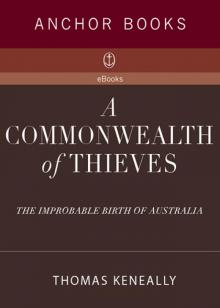 A Commonwealth of Thieves
A Commonwealth of Thieves Ned Kelly and the City of Bees
Ned Kelly and the City of Bees A River Town
A River Town Bettany's Book
Bettany's Book Blood Red, Sister Rose: A Novel of the Maid of Orleans
Blood Red, Sister Rose: A Novel of the Maid of Orleans Victim of the Aurora
Victim of the Aurora American Scoundrel American Scoundrel American Scoundrel
American Scoundrel American Scoundrel American Scoundrel Three Cheers for the Paraclete
Three Cheers for the Paraclete Australians: Origins to Eureka: 1
Australians: Origins to Eureka: 1 The Power Game
The Power Game The Chant Of Jimmie Blacksmith
The Chant Of Jimmie Blacksmith The Daughters of Mars
The Daughters of Mars Searching for Schindler
Searching for Schindler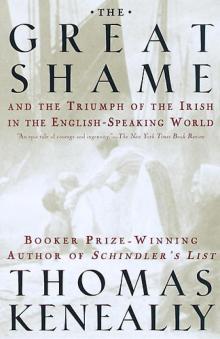 The Great Shame: And the Triumph of the Irish in the English-Speaking World
The Great Shame: And the Triumph of the Irish in the English-Speaking World Abraham Lincoln
Abraham Lincoln The Widow and Her Hero
The Widow and Her Hero Eureka to the Diggers
Eureka to the Diggers Shame and the Captives
Shame and the Captives The Survivor
The Survivor Jacko: The Great Intruder
Jacko: The Great Intruder The Book of Science and Antiquities
The Book of Science and Antiquities Homebush Boy
Homebush Boy The Playmaker
The Playmaker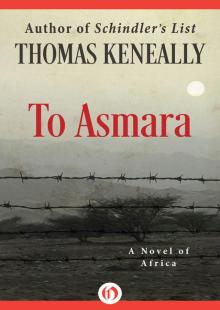 To Asmara: A Novel of Africa
To Asmara: A Novel of Africa A Woman of the Inner Sea
A Woman of the Inner Sea The Tyrant's Novel
The Tyrant's Novel Australians
Australians Schindler's Ark
Schindler's Ark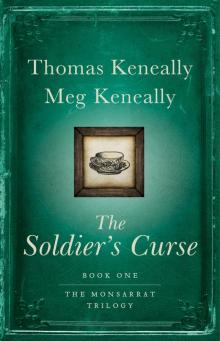 The Soldier's Curse
The Soldier's Curse Australians, Volume 3
Australians, Volume 3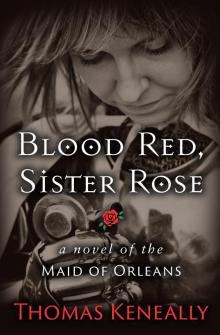 Blood Red, Sister Rose
Blood Red, Sister Rose A Victim of the Aurora
A Victim of the Aurora The Unmourned
The Unmourned Australians, Volume 2
Australians, Volume 2 To Asmara
To Asmara